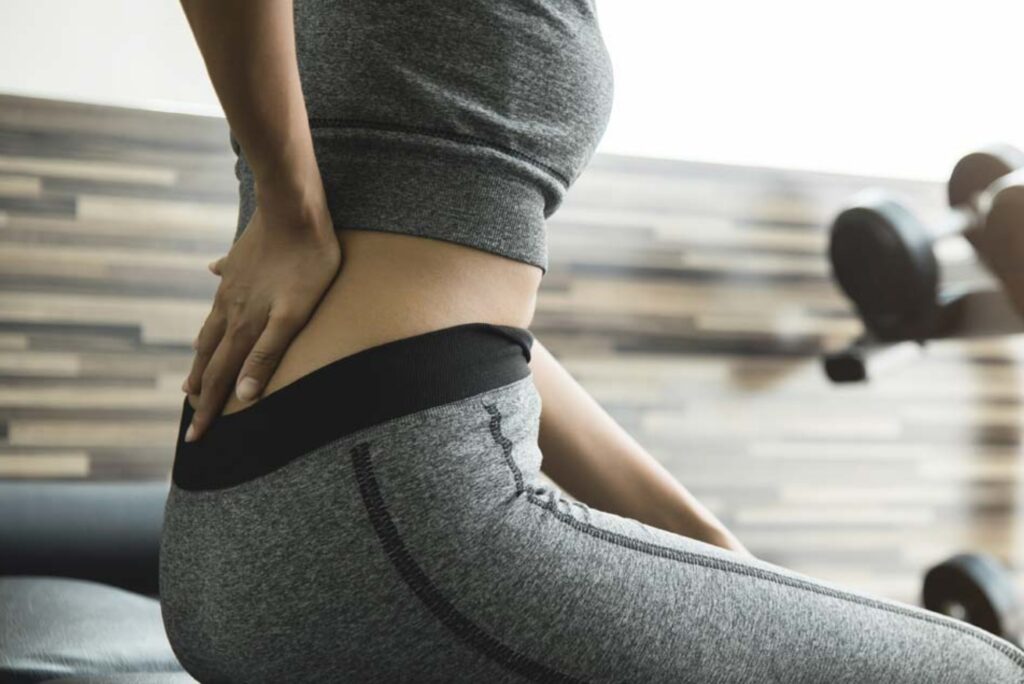Back pain is a common issue faced by many gym-goers, often stemming from incorrect form, overexertion, or inadequate warm-up. Here’s a comprehensive guide to help you steer clear of back discomfort and enjoy a productive gym session.
Understanding the Causes of Back Pain
Back pain is a common ailment that affects people of all ages and can significantly impact daily life. The causes of back pain vary, ranging from lifestyle factors to underlying medical conditions. Understanding the root cause is crucial for effective management and prevention. Below are some of the most common causes of back pain:
Muscle or Ligament Strain
Muscle or ligament strains are one of the most frequent causes of back pain. They can occur due to heavy lifting, sudden movements, or even prolonged poor posture. When muscles or ligaments in the back are overstretched or torn, it can lead to painful spasms and restricted movement. Poor physical conditioning can also contribute to this type of injury, making it more likely to occur during everyday activities.
Herniated or Bulging Discs
The spine consists of vertebrae cushioned by discs, which act as shock absorbers. A herniated or bulging disc occurs when the inner gel-like substance of the disc pushes through its outer layer, often pressing on nearby nerves. This can result in sharp pain, numbness, or tingling, particularly if it affects the sciatic nerve, leading to pain radiating down the leg (sciatica). Disc problems are more common as people age, as discs naturally degenerate over time.
Poor Posture
Maintaining poor posture over time can place undue stress on the spine and supporting muscles. Slouching or sitting for long periods without proper back support can strain the back muscles and lead to discomfort. This is particularly common in people who work in sedentary jobs or spend long hours in front of a computer without practicing good posture habits.
Osteoarthritis
Osteoarthritis is a degenerative joint disease that affects the spine’s joints and cartilage. Over time, the cartilage that cushions the joints wears down, leading to pain, stiffness, and inflammation. Osteoarthritis can also lead to the formation of bone spurs, which can compress the nerves in the spine, causing additional discomfort.
Spinal Stenosis
Spinal stenosis is a condition where the spaces within the spine narrow, putting pressure on the nerves that travel through the spine. This condition is often caused by the natural wear and tear associated with aging. It can lead to symptoms like pain, numbness, and muscle weakness, especially in the lower back and legs.
Skeletal Irregularities
Certain structural abnormalities, such as scoliosis (a curvature of the spine), can lead to chronic back pain. These irregularities place uneven pressure on different parts of the spine, causing muscle strain and discomfort over time. While mild cases may not cause significant pain, more severe cases can lead to persistent back issues.
Osteoporosis
Osteoporosis is a condition characterized by weakened bones, making them more prone to fractures. Vertebral compression fractures caused by osteoporosis can lead to sudden and severe back pain. This is more common in older adults, particularly postmenopausal women, due to decreased bone density.
Accidents and Injuries
Traumatic events like car accidents, falls, or sports injuries can result in back pain. These incidents may cause fractures, ligament tears, or muscle strains, leading to both acute and long-term pain. Even after healing, some injuries can cause lingering pain or lead to chronic conditions.
Lifestyle Factors
Sedentary lifestyles, obesity, and lack of exercise can all contribute to back pain. Excess weight places additional strain on the spine, while lack of physical activity can lead to weakened muscles that fail to properly support the back. Engaging in regular physical exercise, particularly activities that strengthen the core, can help alleviate and prevent back pain.
Emotional Stress
Stress and anxiety can contribute to back pain by causing muscle tension and poor posture. When people are under stress, they may unconsciously tighten their back muscles, leading to discomfort. Additionally, chronic stress can lead to lifestyle choices that exacerbate back pain, such as avoiding physical activity or not getting enough rest.
Understanding the various causes of back pain is the first step in addressing the issue effectively. While some causes, such as accidents or medical conditions, require medical intervention, many cases can be improved through lifestyle changes, proper posture, and physical activity. If back pain persists, it is essential to seek professional advice to determine the underlying cause and appropriate treatment options.
Poor Form and Technique Incorrect posture and improper lifting techniques can strain your back muscles and lead to discomfort or injury. Ensure proper form for each exercise to minimize the risk.
Overtraining and Fatigue Pushing yourself too hard without adequate rest can cause muscle fatigue, leading to strained or overworked back muscles. Listen to your body’s signals and incorporate rest days into your routine.

Tips for Preventing Back Pain in the Gym
Warm-Up Properly
Start your workout with dynamic stretches and light cardio to prepare your muscles for the upcoming activity. A proper warm-up increases blood flow and flexibility, reducing the risk of injury.
Focus on Core Strength
A strong core stabilizes your spine and helps maintain proper posture during exercises. Incorporate core-strengthening exercises such as planks, dead bugs, and Russian twists into your routine.
Use Proper Equipment
Ensure that gym equipment, such as weights and machines, is adjusted to your body size and fitness level. Using equipment that’s too heavy or too light can strain your back muscles.
Listen to Your Body
Pay attention to any discomfort or pain during your workouts. If you experience persistent back pain, stop the exercise and consult a fitness professional or healthcare provider.
Incorporate Variety
Avoid overloading specific muscle groups by incorporating a variety of exercises into your routine. This prevents muscle imbalances and reduces the strain on your back.
By prioritizing proper form, adequate warm-up, core strength, and listening to your body, you can significantly reduce the risk of back pain during gym sessions. Remember, a balanced and mindful approach to fitness is key to enjoying a safe and effective workout experience.

Gym Shoes
Choosing the right gym shoes is crucial for preventing back pain and ensuring proper support during workouts. Look for GYM shoes with adequate cushioning, arch support, and stability to minimize the impact on your back and joints. Avoid worn-out shoes that no longer provide proper support, as they can contribute to poor posture and increased risk of injury.
Marijah Clinic
Marijah Clinic offers holistic solutions for back pain management, combining traditional medicine with alternative therapies such as chiropractic care, acupuncture, and massage therapy. Their multidisciplinary approach aims to address the root cause of back pain and promote long-term healing and wellness. With a team of experienced professionals dedicated to patient care, Marijah Clinic provides personalized treatment plans tailored to individual needs.





